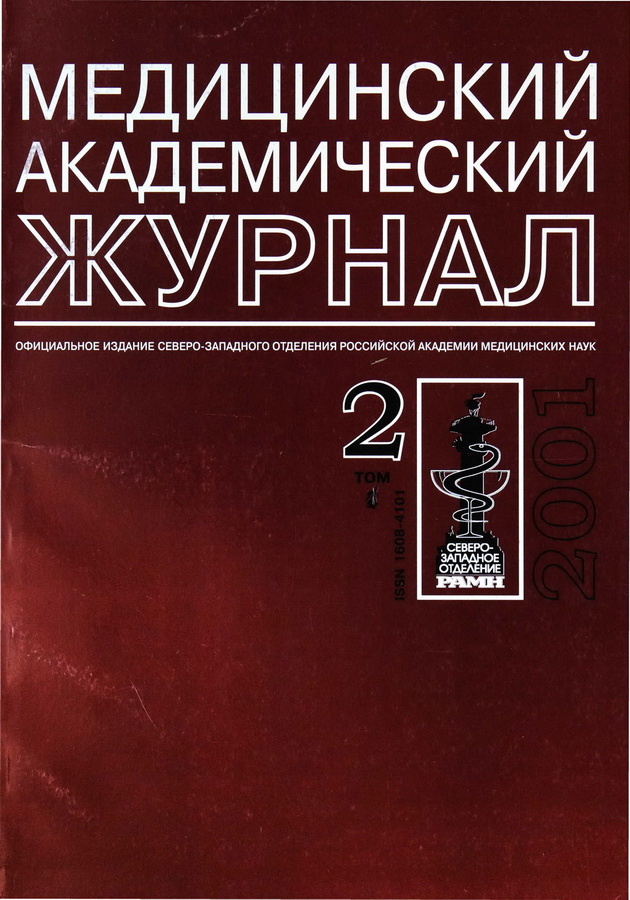Комплексная оценка кардиопротективного действия феномена ишемической адаптации в эксперименте: влияние глубины ишемии на реализацию антиаритмического эффекта
- Авторы: Петрищев Н.Н.1, Цырлин В.А.1, Власов Т.Д.1, Сыренский А.В.1, Сонин Д.Л.1, Минасян С.М.1, Галагудза М.М.1
-
Учреждения:
- Государственный медицинский университет имени академика И. П. Павлова
- Выпуск: Том 1, № 2 (2001)
- Страницы: 14-21
- Раздел: Фундаментальная медицина
- Статья опубликована: 07.11.2001
- URL: https://journals.eco-vector.com/MAJ/article/view/693483
- DOI: https://doi.org/10.17816/MAJ693483
- ID: 693483
Цитировать
Полный текст
Аннотация
В острых экспериментах in vivo и на изолированном сердце анализировались кардиопротективные эффекты феномена ишемической адаптации миокарда. В качестве критериев оценки эффективности ишемической адаптации использовали размер зоны инфаркта, частоту и длительность ишемических и реперфузионных аритмий, а также скорость восстановления сократительной функции левого желудочка изолированного сердца. Полученные данные подтверждают наличие двух видов кардиопротективного действия ишемической адаптации: антиаритмического и инфаркт-лимитирующего. При этом антиаритмический эффект имеет более низкий порог, чем инфаркт-лимитирующий, так как воспроизводится уже после однократного эпизода кратковременной ишемии. Наблюдается отсутствие антиаритмического эффектаишемической адаптации в отношении реперфузионных аритмий при значительных степенях снижения коронарного кровотока. В то же время ишемическая адаптация способствует более полному и раннему восстановлению сократительной функции левого желудочка в ходе ишемии именно при существенном снижении коронарного кровотока.
Ключевые слова
Об авторах
Н. Н. Петрищев
Государственный медицинский университет имени академика И. П. Павлова
Автор, ответственный за переписку.
Email: medaj@eco-vector.com
Россия, Санкт-Петербург, 197022, ул. Льва Толстого, 6/8
В. А. Цырлин
Государственный медицинский университет имени академика И. П. Павлова
Email: medaj@eco-vector.com
НИИ кардиологии МЗ РФ
Россия, Санкт-Петербург, 197022, ул. Льва Толстого, 6/8Т. Д. Власов
Государственный медицинский университет имени академика И. П. Павлова
Email: medaj@eco-vector.com
Россия, Санкт-Петербург, 197022, ул. Льва Толстого, 6/8
А. В. Сыренский
Государственный медицинский университет имени академика И. П. Павлова
Email: medaj@eco-vector.com
Д. Л. Сонин
Государственный медицинский университет имени академика И. П. Павлова
Email: medaj@eco-vector.com
С. М. Минасян
Государственный медицинский университет имени академика И. П. Павлова
Email: medaj@eco-vector.com
Россия, Санкт-Петербург, 197022, ул. Льва Толстого, 6/8
М. М. Галагудза
Государственный медицинский университет имени академика И. П. Павлова
Email: medaj@eco-vector.com
Россия, Санкт-Петербург, 197022, ул. Льва Толстого, 6/8
Список литературы
- Гурин А. В., Молош А. И., Сидоренко Г. И. Прерывистая ишемия — уникальный адаптивный феномен. Перспектива новых путей фармакологического воздействия // Кардиология. 1997. Т. 6. С. 45–52.
- Коган А. Х. Хирургический метод моделирования коронароокклюзионного инфаркта и аневризмы сердца у крыс // Патологическая физиология и экспериментальная терапия. 1975. Т. 15. С. 79–82.
- Cave A. C., Collis C. S., Downey J. M., Hearse D. J. Improved functional recovery by ischemic preconditioning is not mediated by adenosine in the globally ischemic isolated rat heart // Cardiovasc. Res. 1993. Vol. 27. P. 663–668.
- Downey J. M., Liu J. S., Thornton J. D. Adenosine and the anti-infarct effects of preconditioning // Cardiovasc. Res. 1993. Vol. 27. P. 3–8.
- Ferrari R., Ceconi C., Curello S. et al. Myocardial damage during ischemia and reperfusion // Eur. Heart J. 1993. Vol. 14 (Suppl. G). P. 25–30.
- Fishbein M. C., Meerbaum S., Rit J. et al. Early phase acute myocardial infarction size quantification: validation of the triphenyltetrazolium chloride tissue enzyme staining technique // Am. Heart J. 1981. Vol. 101. P. 593–600.
- Himory N., Matsuura A. A simple technique for occlusion and reperfusion of coronary artery in conscious rats // Am. J. Physiol. 1989. Vol. 256. P. H1719–H1725.
- Huang C. H., Kim S. J., Ghalen B., Kudel R. K., Shen Y. T., Bishop S. P., Vatner S. F. An adenosine agonist and preconditioning shift the distribution of myocardial blood flow in conscious pigs // Am. J. Physiol. 1999. Vol. 276 (45). P. H368–H375.
- Janier M. F., Vanoverschelde J., Bergmann S. R. Ischemic preconditioning stimulates anaerobic glycolysis in the isolated rabbit heart // Am. J. Physiol. 1994. Vol. 267. P. H1353–H1360.
- Leiris J., Harding D. P., Pestre S. The isolated rat heart: a model for studying myocardial hypoxia or ischemia // Basic Res. Cardiol. 1984. Vol. 79 (3). P. 315–323.
- Li G. C., Vasquez J. A., Gallagher K. P., Lucchesi B. R. Myocardial protection with preconditioning // Circulation. 1990. Vol. 82. P. 609–619.
- Liu Y., Downey J. M. Ischemic preconditioning protects against infarction in rat heart // Am. J. Physiol. 1992. Vol. 263. P. H1107–H1112.
- Murry C. E., Jennings R. B., Reimer K. A. Preconditioning with ischemia: a delay of lethal cell injury in ischemic myocardium // Circulation. 1986. Vol. 74. P. 1124–1136.
- Ottani F., Galvani M., Ferrini D., Nicolini F. A. Clinical relevance of prodromal angina before acute myocardial infarction // Int. J. Cardiol. 1999. Vol. 68 (Suppl. 1). P. S103–S108.
- Oxman T., Arad M., Klein R., Avazov N., Rabinowitz B. Limb ischemia preconditions the heart against reperfusion tachyarrhythmia // Am. J. Physiol. 1997. Vol. 273 (4 Pt 2). P. 1707–1712.
- Piper H. M., Garcia-Dorado D., Ovize M. A fresh look at reperfusion injury // Cardiovasc. Res. 1998. Vol. 38. P. 291–300.
- Van Winkle D. M., Thornton J., Downey D. M. et al. The natural history of preconditioning: cardioprotection depends on duration of transient ischemia and time to subsequent ischemia // Coronary Art. Dis. 1991. Vol. 2. P. 613–619.
- Walker M. J., Curtis M. J., Hearse D. J. et al. The Lambeth Conventions: guidelines for the study of arrhythmias in ischemia, infarction, and reperfusion // Cardiovasc. Res. 1988. Vol. 22. P. 447–455.
- Yellon D. M., Baxter G. F., Garcia-Dorado D., Heusch G., Sumeray M. S. Ischemic preconditioning: present position and future directions // Cardiovasc. Res. 1998. Vol. 37. P. 21–33.
Дополнительные файлы






